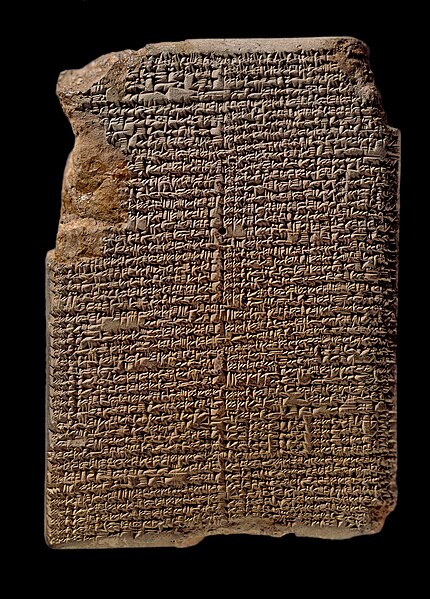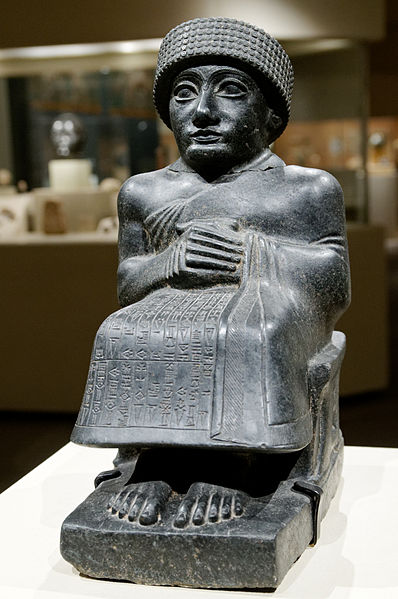Babylonian astronomy was the study or recording of celestial objects during the early history of Mesopotamia. The numeral system used, sexagesimal, was based on sixty, as opposed to ten in the modern decimal system. This system simplified the calculating and recording of unusually great and small numbers.
A Babylonian tablet recording Halley's comet in 164 BC
Mul.apin cuneiform tablet
Mesopotamia is a historical region of West Asia situated within the Tigris–Euphrates river system, in the northern part of the Fertile Crescent. Today, Mesopotamia is known as present-day Iraq and north-eastern Syria. In the broader sense, the historical region of Mesopotamia also includes parts of present-day Iran, Turkey, and Kuwait.
A modern satellite view of Mesopotamia, October 2020.
The Tigris river flowing through the region of modern Mosul in Upper Mesopotamia.
Mesopotamian Marshes at night, southern Iraq. A reed house (Mudhif) and a narrow canoe (Mashoof) are in the water. Mudhif structures have been one of the traditional types of structures, built by the Marsh people of southern Mesopotamia for at least 5,000 years. A carved elevation of a typical mudhif, dating to around 3,300 BCE was discovered at Uruk.
One of 18 Statues of Gudea, a ruler around 2090 BC






